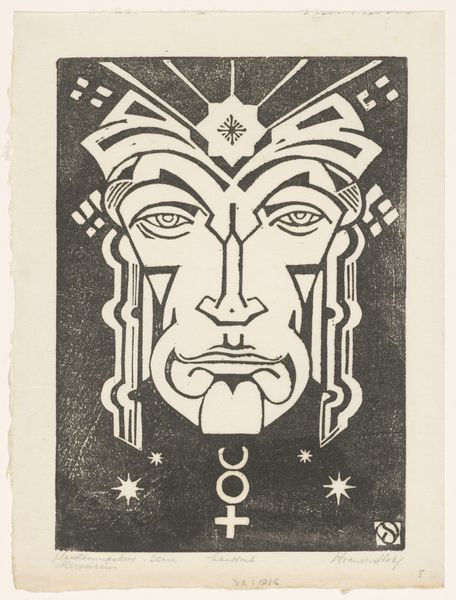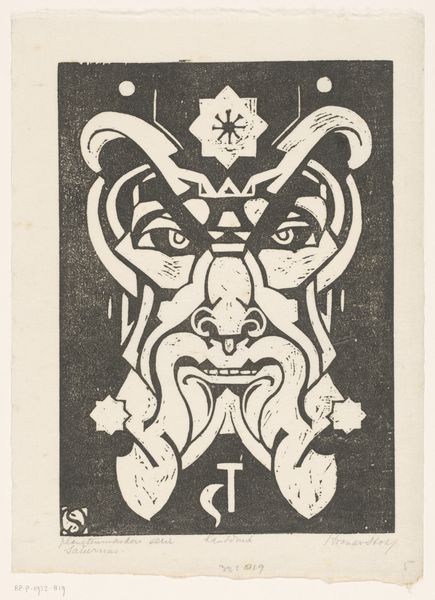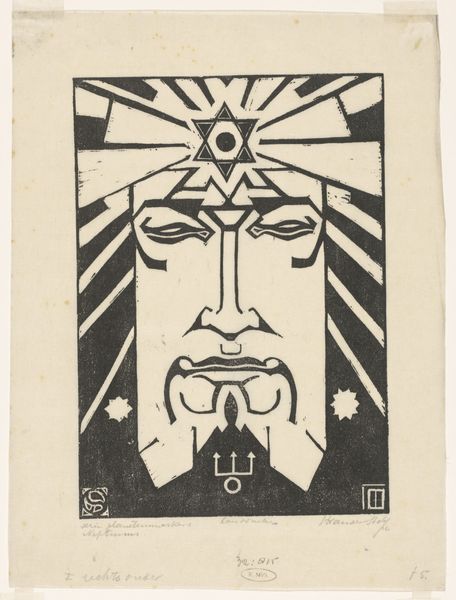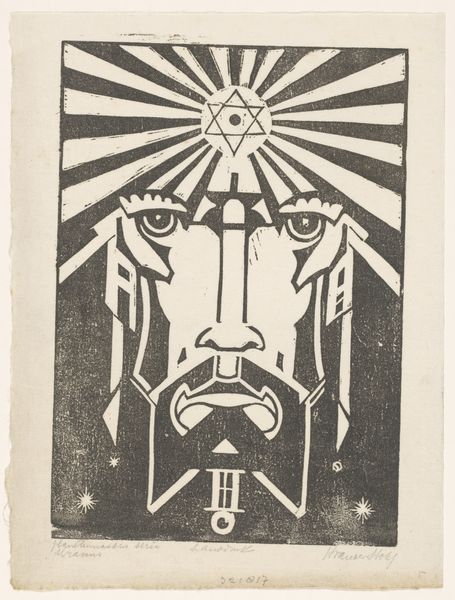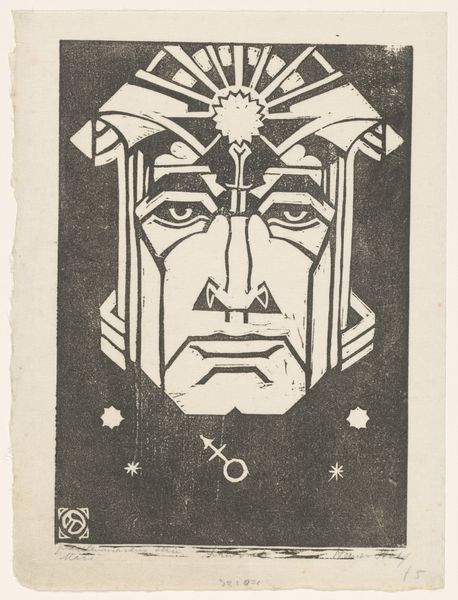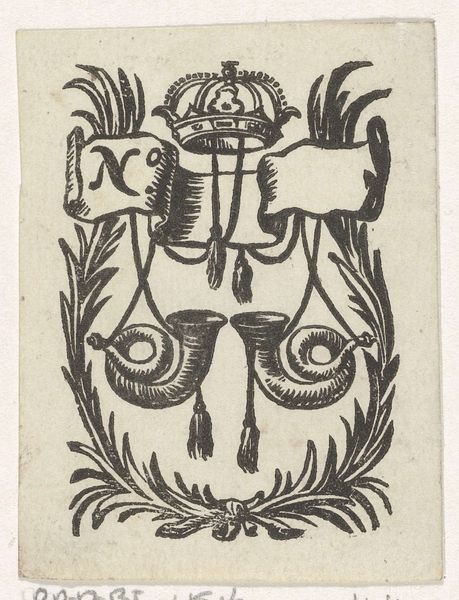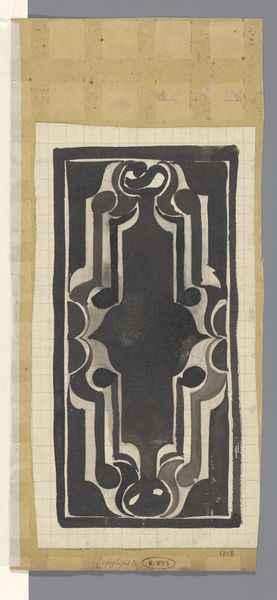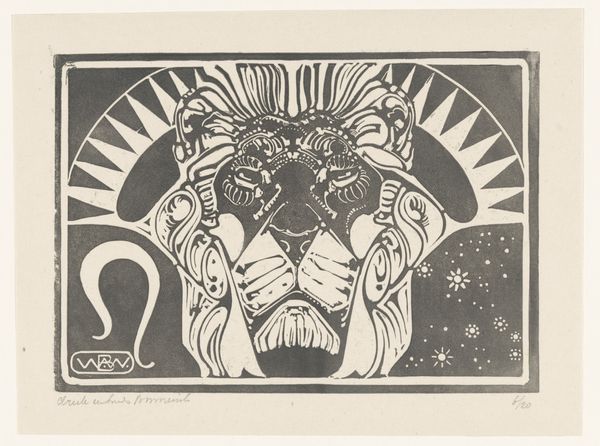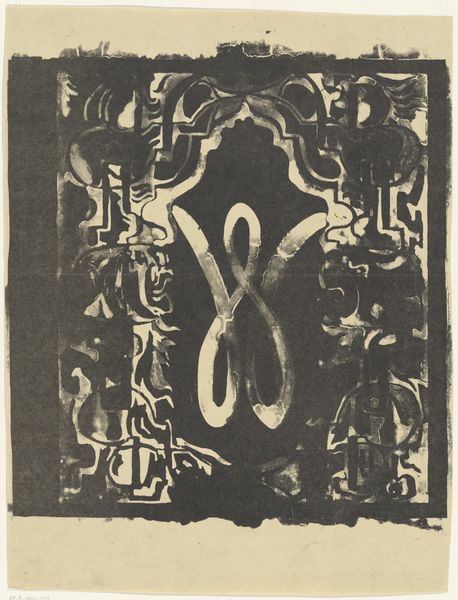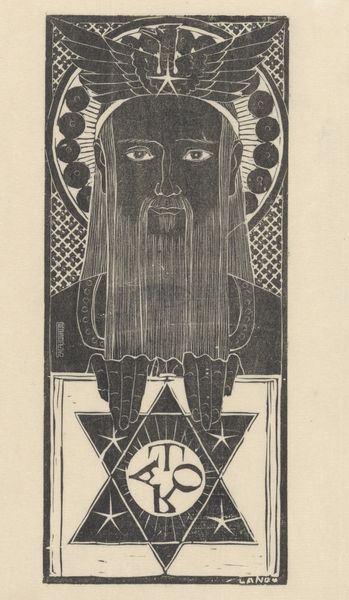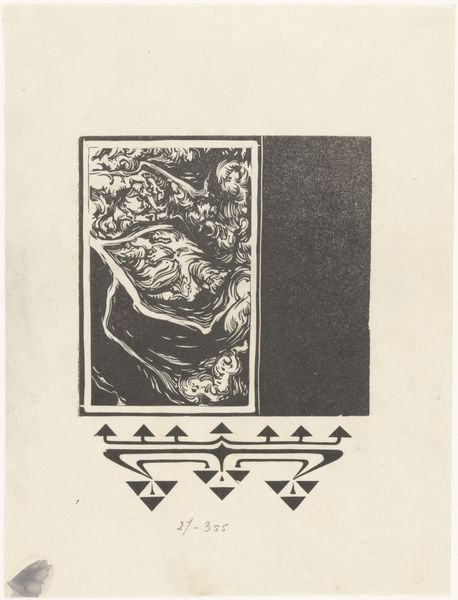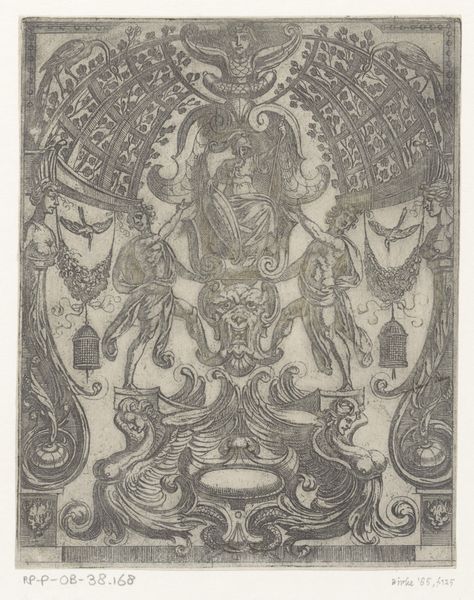
#
childish illustration
#
cartoon like
#
old engraving style
#
junji ito style
#
pen-ink sketch
#
sketchbook drawing
#
tattoo art
#
cartoon style
#
cartoon carciture
#
doodle art
Dimensions: height 330 mm, width 247 mm
Copyright: Rijks Museum: Open Domain
Curator: Right now we're looking at Henri van der Stok's "Jupiter," created between 1880 and 1932 and held in the Rijksmuseum collection. It's a striking image. Editor: Yes, my immediate impression is one of controlled power, almost like an icon carved from stone. The stark black and white really emphasizes the graphic quality. Curator: Indeed. Given that the work is a woodcut, the labor and the process of its creation is key. The contrast is achieved through meticulous carving away at the block to reveal Jupiter's face, framed within geometric shapes. One might wonder about the tools van der Stok employed, and the communities of practice that supported his endeavor. Editor: Absolutely, and that bold, stylized depiction of Jupiter—it's no accident. Considering this was produced in the late 19th to early 20th century, we have to see it as a visual statement, part of a larger dialogue of the role of mythology and power. Jupiter, as king of the gods, is intrinsically linked with societal hierarchies. What kind of statement might the artist have wanted to communicate? Curator: Well, consider the material reality of the print medium. Unlike painting, prints are reproducible. The imagery could have easily circulated through social networks, thus reaching wider audiences, perhaps to engage and comment on such notions of hierarchy and power. It would have transformed in its circulation! Editor: Good point. And it invites us to question representations of authority figures throughout art history and up to our present day. What visual strategies are used to portray the powerful, and who benefits from them? Van der Stok may or may not have been commenting, but the work resonates with discussions on dominance, class, and maybe even masculinity. Curator: It's a fascinating dance between material production and sociocultural implications. The rigid precision with which the block had to be cut versus its potential for dissemination and commentary... Editor: A simple yet complicated image that encapsulates power relations, wouldn’t you say? Curator: Precisely. Its stark materiality invites considerations beyond its face value. Editor: Ultimately, "Jupiter" pushes us to examine how art, even through simple methods, interacts with society.
Comments
No comments
Be the first to comment and join the conversation on the ultimate creative platform.
